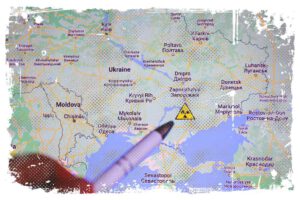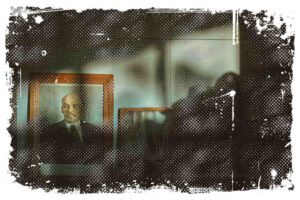At the time of the aggression against Poland, the Third Reich’s army had a great advantage in quantity and quality. This was a consequence of the manpower and economic potential in both countries. Greater in population and more wealthy, Germany called up more troops and also had more equipment. The disproportion was not always clearly visible. In some areas, the Poles had similar machinery in terms of quality, but we often had not enough of it. The Germans also had an element of surprise on their side. As the attacking side, they had most of their forces available from the very first day. Not only did the Polish soldiers have to repel the attacks, which were brought by surprise, but they were also in the process of self-mobilization, which had not been fully completed before September 1, 1939.

Shortly Before The War
Between 1935 and 1939, namely the four-year period right before the war, Germany invested heavily in military assets. During that period, their total military budget was around $24 billion. To compare, Poland at the time spent about $730 million on military purposes (which was still a substantial amount, considering the economic condition of Poland). Moreover, the Germans could rely on a highly advanced industry and extensive access to modern technologies, which they dynamically developed in cooperation with the USSR. The level of Nazi Germany’s militarization was far greater than the Polish one, although both countries paid great attention to the army. Once the National Socialists came to power, Germany started rebuilding its military potential dynamically.
In Poland, the program for the armed forces’ development was initiated in 1936 and planned for many further years. Unfortunately, it was not fully implemented—some purchased orders did not arrive before the war broke out.
Military forces the day before the war started – Comparison
| Type | Poland | The Third Reich | USSR |
|---|---|---|---|
| Soldiers | 950,000 | 1,850,000 | 1,000,000 |
| Armor Weapons | 600 | 2,800 | 6,000 |
| Artillery | 4,500 | 11,000 | 13,500 |
| Aircrafts | 450 | 2,000 | 1,800 |
| Navy – Battleships | 0 | 8 | 5 |
| Nacy – Cruizers | 4 | 22 | 29 |
| Navy – Submarines | 5 | 57 | 164 |
Was The Polish Army Modernized in 1939?
The Polish Army was supposed to be upgraded. The plans for its modernization were made for the years 1936–1942. Many people ask if such plans really existed. Was there really an upgrade plan, or was it just a political ruse?
↳ PRO TIP: Do you like traveling? Then before you buy any ticket or book an attraction, check if it's available in this worldwide Viator Database. You may save a lot of money and time. No need to thank me :)
The plan for the technical modernization of the Polish Army over the period 1936–1942 (sometimes known as the Six-Year Plan) did exist. In fact, it resulted in a series of resolutions and decisions on the further development of the Polish Army, which were taken by the army management between 1935 and 1937. It was originally planned that this development would be executed between 1936 and 1942. It quickly became clear that, for various reasons, both technical and financial, it needed to be extended until 1944.
For some areas, it may have taken even longer to achieve the goals. Some people called this plan „an eight-year plan”, or informally, even „a 10-year plan” of Polish Army development. The reason for all this was that it turned out there would not be enough funds, or that they would arrive slower than expected. Armament is a gigantic financial challenge. We not only have to buy new weapons, we also have to keep them in a combat-ready state. You have to pay soldiers, you have to re-construct facilities. Buying a simple machine gun or a vehicle actually requires training soldiers and providing spare parts for the equipment. You have to build new barracks very often. In a nutshell, equipment is sometimes only 20% of the cost of its lifespan.
Plans That Were Not Implemented
The second issue was technical limitations. Equipment that was supposed to arrive as part of this Army modernization process would eventually be provided later. For something that was considered a priority in 1936 and then in 1939, it was no longer the case. One example is the 4T light reconnaissance tank. It was supposed to be the most frequently purchased armored tank for the Polish Army. Based on the accepted schedule in January 1938, it was under construction as a prototype. Eventually, it was not placed in production in 1939. It was considered that due to the possibility of war, there were more important investments needed.
Financial and technical factors prevented the plan from being carried out smoothly. The plan was not implemented exactly the way Polish Army Marshal Smigly-Rydz had planned.
Size of the Polish Army in September 1939
The Wehrmacht’s advantage over the Polish Army was visible in times of peace. The Germans had almost three times the size of the infantry because they maintained up to 600,000 soldiers under arms. In contrast, the Polish Republic had 210,000 men at its disposal. The situation of the Polish people was improved by the so-called „silent mobilization” ordered by Marshal Smigly-Rydz in March 1939. Thanks to that, the number of army enlisted soldiers increased to 354,000. Note that Germany was a far more populous country. In 1939, the population of the Third Reich was estimated at nearly 80 million people (including those living in the annexed Sudetenland and annexed Austria). Poland had a population of about 35 million. For this reason alone, the Germans were able to put more troops under arms.

The statistics on the exact number of soldiers or equipment in Poland and Germany in September 1939 are calculated differently. This is due to a number of categorization rules used in formulating such statistics. In this article, I will use data provided by Polish military historian Lech Wyszczelski. They will be supplemented with information presented by British historian Steven J. Zaloga.
The German Army’s Size
The Germans had mobilized forces to invade Poland as early as August 26, 1939. This was related to the original date of the operation. According to Zalog, these forces consisted of
- 1.8 million soldiers
- 11.000 cannons
- 2.800 tanks
- approximately 2.000 aircraft
These forces were organized into 52 divisions and included 37 infantry divisions, 1 mountain division, 4 motorized infantry divisions, 4 light divisions, and 6 armored divisions. In addition, the Germans had a cavalry brigade and various supporting units or paramilitary troops, which is important in determining their total combat potential. Indeed, it is worth mentioning the difficulty of how to qualify paramilitary units.
Polish Army Size
The Polish Army had 39 infantry divisions, 9 of which served as reserves. On top of this, there were 11 cavalry brigades, 3 mountain brigades, 2 tank-motor brigades, and national defense formations. According to the plan, these troops had to consist of 1.35 million soldiers — but on September 1, only 70% of these forces were mobilized, so the Polish Army had a cumulative number of about one million soldiers under arms. In addition, the equipment included approximately:
- 4300 cannons
- 475 tanks
- 463 aircraft
The German advantage over Poland was roughly:
- 1.8:1 in infantry;
- 3:1 in field artillery;
- 5:1 in anti-tank artillery;
- 4:1 in tanks;
- 5:1 in aircraft.
The ratio was therefore very unfavorable to the Polish Army. On the other hand, the only formation in which the Polish dominated was cavalry. Poland formed 11 brigades, which were opposed by just 1 German brigade. However, these were not the types of units that could significantly affect the war, although they proved themselves in battle in many cases during the 1939 Defensive War. It is also worth mentioning that they also used horses to transport armaments. The Germans used horse-drawn wagons as well, but they had many more cars and motorcycles, which had an impact on their mobility and speed of transportation.
Most Valuable Polish Weapons in 1939
Let’s dig into some of the most interesting and valuable weapons we had in the first days of war. There are several types of weapons that I’m going to present. I would also like to point out that the subject of this list is not weapons manufactured or designed exclusively in Poland. Instead, I will describe here a gun that was available to the Polish Army in 1939. It also includes the ones we could buy from abroad.
#5: NKM 20 mm wz. 38FK
The one that you see in the picture may look quite unimpressive. We should remember that it was 1939 and armored vehicles were not well developed yet. The military vehicles available on the market were poorly armored, and we didn’t need large armaments like those that were later produced in World War II.

Our army obviously suffered from a lack of anti-tank weapons, while our neighbors were armoring themselves tremendously. The Poles had to come up with something new. This is how the idea for the very versatile NKM occurred. NKM stands for „heaviest machine gun”. There were all sorts of tests done. We even sent our delegation abroad to check the guns that were available for sale in other countries. Unfortunately, it turned out that there was always something wrong with them. Each time, there was at least one condition that wasn’t met. We probably wanted too much universal machinery, so it was decided that we would produce such a gun ourselves. This is where the rifle factory in Warsaw entered the game. In 1937, we already had a prototype. The tests began. Unfortunately, at first the tests didn’t turn out very well because we didn’t have a very good aiming system for this gun. We also wanted it to be universal. The Polish army planned to mount it on cars. It was also supposed to be an infantry weapon. It was also to be an anti-aircraft rifle. And additionally, it was going to be a gun used on aircraft. Unfortunately, the machine gun that was produced was not suitable for airplanes. The Army decided that the gun would be slightly modified and improved. It will mainly be used as an anti-aircraft weapon and, of course, as an infantry support weapon. The ammunition from this gun was capable of penetrating 40 mm of armor from a distance of 200 m.
This was a very good result at that time. It was the best result out of all those guns that they tried to buy abroad. Finally, in 1938, they decided to equip the Polish Army with this gun. It turned out that it was an excellent anti-aircraft gun. The army started ordering them. Unfortunately, the production did not go exactly the way the army wanted. The Army was receiving too few of these guns in comparison to its needs. The plan was to equip PZL-130 floating tanks, 4-TP reconnaissance tanks, and around 100 TK-3 and TK-S tankettes. But as you know, the start of World War II blocked all our plans effectively.
Nevertheless, during the defensive war in 1939, the gun fulfilled its task. It allowed us to destroy enemy tanks very effectively. We should bear in mind that German vehicles were not well armored in 1939. It was enough for such an NKM to penetrate these vehicles without any problem.
#4: 38-mm anti-tank cannon, wz. 36.
Well, we’re still in the anti-tank weapons business, but that’s obviously no coincidence. While our neighbors armored themselves, having an anti-tank weapon in our army could significantly delay enemy attacks. The 37mm cannon was perfect for this purpose. We purchased a license from the Swedes. Actually, we were one of several countries that had acquired this license. The contract was signed in 1935, and we were going to buy 300 cannons and also produce them in Poland. The factories in Pruszkow and Rzeszow became responsible for the task. The plan was to produce 3,000 pieces.

The Polish cavalry also included anti-tank units. They were equipped with exactly these guns. So what’s so cool about a cavalryman having such a cannon? The weapon was very small, which meant that it was very easy to camouflage. Transport in difficult terrain was much easier. We should remember that the war took place on our territory. Our troops were familiar with the terrain, and a unit equipped with anti-tank guns could indeed move very quickly. Another use of the 37mm cannon was the 4 TP tank. From 500 meters, it could easily penetrate up to 25 mm of armor, which means it destroyed any German tank. Let’s remember that the Germans had armored vehicles at their disposal. These cars could also be destroyed from a distance of 1,000 meters.
#3: Anti-tank rifle wz. 35 „Uruguay”
We needed to have something that an individual soldier could carry. It is also something that would be very threatening to the enemy. That is how the project for an anti-tank rifle was born. The first to work on it was Tadeusz Felsztyn, and then, later, Jozef Maroszek. This weapon was designed to penetrate 15 mm armor from a distance of 300 meters, while from 100 meters it was expected to pierce even a 33 mm shield. It actually did.

One thing should be added here. 100 meters is not a long distance. Another thing is that if you shoot with a large caliber bullet, typically this bullet makes a massacre of either the crew or the equipment. In contrast, due to the small caliber, it often happened that the armor was punctured, but unfortunately it did not cause any damage. The gunner either missed the vehicle’s personnel or only wounded them. During the combat, many of these weapons ended up in the hands of the Russians and the Germans. More than 800 pieces are estimated to have been taken over by the Germans.
#2: TKS tankettes and the 7-TP tank
The TKS tankette was a bit underestimated. The truth is that this vehicle, due to its small size and because of its armament (20 mm NKM machine gun), could successfully compete with German tanks.
It could attack them very effectively, and I have a feeling that there were many such episodes during the defensive war in 1939. It’s just that no one has written about it. The TKS was a light recon tank. Originally it was armed with a CKM, but later some of the vehicles featured a 20mm NKM machine gun. The vehicle is tiny, and this made it very difficult for the Germans to hit it.

The second item is the 7-TP. It is a very well-known tank. Everything about it has probably already been said in Poland. Its history started with the purchase of British tanks, which we decided to modify heavily. In 1935, the first mass production started, but there were very few of these units. The disadvantage of the tank was that ammunition for the 20 mm gun was often in short supply. The 7-TP tank could carry 80 rounds for the 37 mm gun and 3960 machine gun rounds. The tank was equipped with a 7.92mm Browning gun. It was not a perfect tank due to its very poor armor, which was a consequence of the high cost of production. If not this, the vehicle would have been well armored, and then the situation would have changed dramatically. There were too few of these tanks to turn the game in favor of Polish victory. If there were more of them in Poland and they were armed with even more NKSs, then the Germans would have had it much worse. However, the poor armor caused very heavy losses. We lost plenty of these vehicles. Apparently, about 20 of them ended up in German hands.

#1: GROM-class destroyer battleships
This was the flagship of our army. Unfortunately, this in any way reflected combat value in 1939. First, I will say a little about the vessels themselves. The destroyers were built in Great Britain at the request of our government. They were the most modern and best-armed warships of this class in the world. Now, the question that comes to mind is, did we even need such battleships? What could we buy in exchange for these ships? What happened in 1939 that made these ships useless?

Of course, we had some other destroyers that were built in France too. These were ships of the „Wicher” type. Nevertheless, they were much older, and we will not compare them here. What we are interested in is „ORP Grom” and „ORP Blyskawica”. The contract for building one was signed on May 29, 1935. On July 17, 1925, the actual production of the first ship, the „ORP Grom”, began. „Blyskawica” was built a little bit later, on October 1, 1935. Both ships featured very good weapons. It included 7 guns each of 120 mm.
So the question should be asked, how did the warships perform in the 1939 defensive war? They did not perform at all. The command realized that these ships, faced with an attack by the Germans, would simply not be able to defend themselves. They will be destroyed, and they will not have a chance to cause any damage to the enemy on their own. The plan was to withdraw „Burza,” „Blyskawica,” and „Grom” to British harbors. We assumed that, since we had an alliance, England would attack the Germans. Our ships would conduct operations against the Germans from Great Britain.
Bibliography
- https://en.wikipedia.org/wiki/Polish_army_order_of_battle_in_1939
- https://sztetl.org.pl/en/glossary/armies-polish-military-forces-1939
- https://muzeumwl.pl/en/polish-army-during-the-second-world-war/
- Lech Wyszczelski, „Polska Mocarstwowa”
- Steven J. Zaloga, „Polska 1939. Blitzkrieg”




